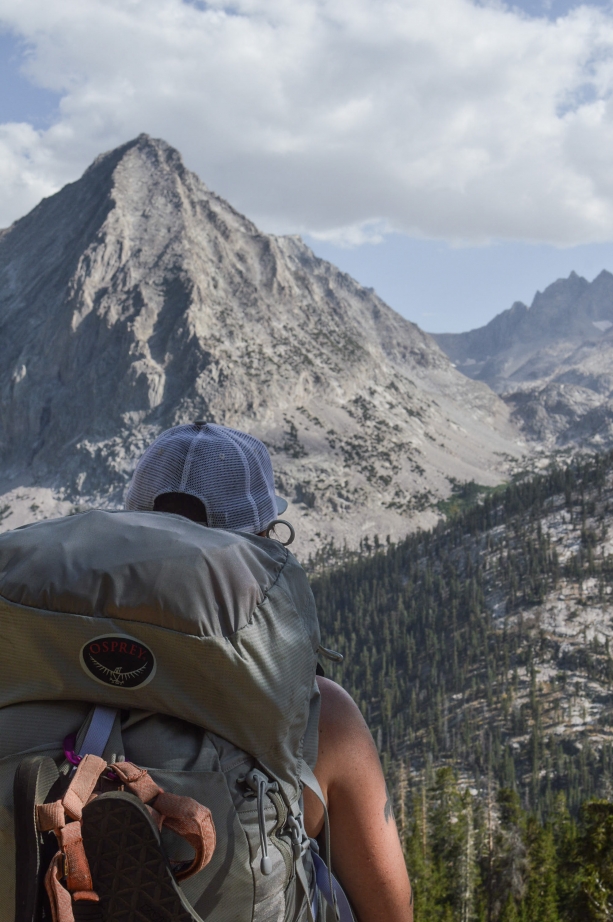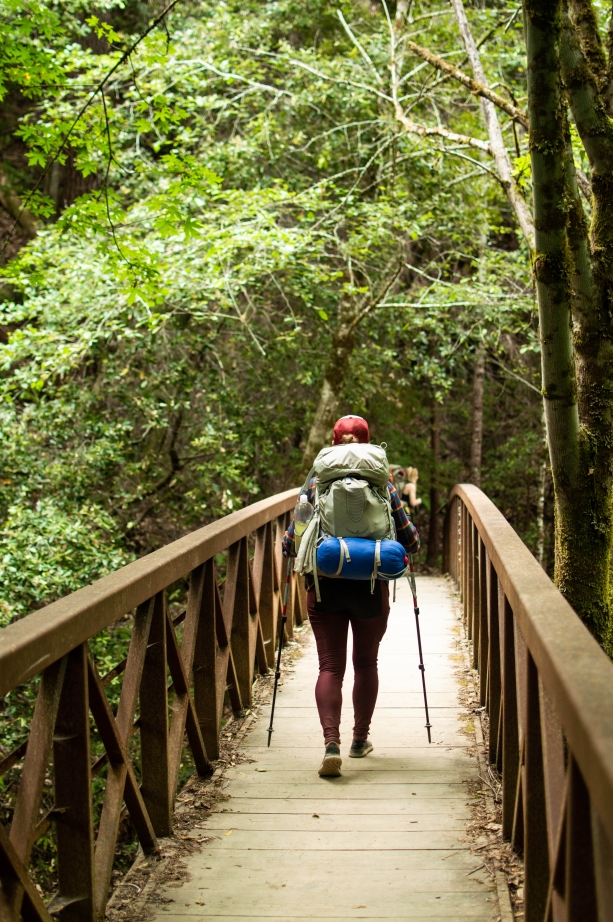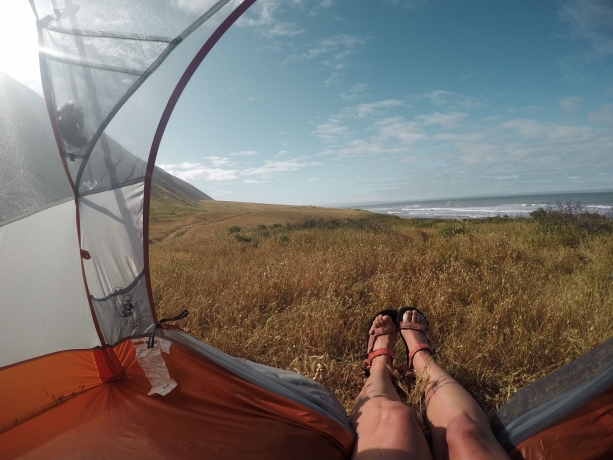
Where do you get started planning your first backpacking trip? It can be a little daunting and overwhelming which is why I’m going to go over all the planning elements you’ll need for a great trip.
The key to any good backpacking trip is going to be planning and research. Knowing and understanding exactly what you are getting into will help you make sure you are prepared for it all. Once you know where you are going and for how long you can plan out everything else from permits to food.
I’ve split things up into five sections to take you through all the steps for planning your backpacking trip.

Choosing your trail
So, where do you want to go? I tend to find trails by reading blogs, looking at Instagram, and through word of mouth. When choosing your trail you should ask yourself a few questions.
- How many nights do you want to be out?
- What type of terrain and what kind of scenery are you looking for? Desert? Alpine? Canyon? Coastal?
- How difficult of a trail are you comfortable with? How much elevation gain or loss are you comfortable with?
- What type of trail are you interested in? Point to point? Loop? Out and back?

Mapping out your route
Once you have decided on an area and how many days you want to hike for, it’s time to figure out your route. Sometimes there will be multiple routes through the same area, other times there’s just one. Either way, getting your route squared away is the next step. Here are a few things to consider.
- How far do you want to hike each day? This will depend on your fitness level and the terrain, I tend to like to average between eight and ten miles a day.
- Picking camp spots. Most trails will have established camping spots and they’ll be marked on maps. It’s good to pick out where you’ll camp each night in conjunction with how far you want to hike each day. That way you have a goal for where you want to end up at the end of the day.
- Shuttle situation. If you are doing a point to point hike you’ll need to figure out the shuttling situation. You can either park one group member’s car at each point and shuttle yourselves back and forth, or look into shuttle services.

When to go
When you go will depend on when you have time off, what seasons the trails are open, and your personal preference. Here are a few things to consider when choosing when to hike.
- What will the weather be like? You probably don’t want to do a desert hike in the middle of summer or a high alpine hike in winter (unless you are into snow camping, then have at it!).
- What is the average climate and rainfall for that time of year? It’ll help you prepare with gear and clothes.
- Are there a lot of bugs that time of year? Bugs can be seasonal and camping in a swarm of mosquitos is the worst.
- Is the area prone to flash floods? This usually applies to canyon hikes, find out when the rainy season is to avoid possible floods causing dangerous situations for hikers.
- Water? The availability of water is important and on some trails it can dry up at certain times of the year.

Permits
As far as I know, all overnight hiking trips need a permit. They generally don’t cost too much, but all trails, state and national parks, and wilderness areas are going to be different.
- Where to get them? Depending on where you’ve chosen to do your hike you can visit that area’s website to find them. Recreation.gov, NPS.gov, and fs.usda.gov are all national outdoor recreation sites where a lot of permit information can be found.
- How to get them? If you purchased your permit online you can just print it out at home and you are good to go. You can also do walk-up permits in many places, either at the area’s visitor center or sometimes even at the trailhead(although this is becoming less common). One thing to note, for the 2020 season all walk-up permits have been suspended due to COVID.

Gear and food
Once you’ve got your time, place, and length squared away you can figure out food, clothes, and gear.
- Pack appropriate clothing and gear. Make sure to check the weather forecast in the days leading up to your hike though so you are up to date on all conditions.
- Seasonal gear. Some gear like crampons and ice axes are both location-specific and seasonal so with your location and timing figured out you’ll be able to bring(or leave home) all the correct items for your hike.
- Bringing enough food. Once you know how long you’ll be going for you’ll be able to figure out home much food you need to bring. Depending on how far you are hiking and the difficulty, people generally need between 2,000 and 3,000 calories a day.

With all these details figured out you’ve got a good plan for your backpacking trip!
Remember to do your research, the more you know about the area you will be hiking the better prepared you’ll be.
READ MORE:
Backpacking 101: Clothes
Backpacking 101: Gear
Backpacking 101: Food
Backpacking 101: Packing Your Backpack
Backpacking 101: All My Secrets
Backpacking 101: Training
Like this post? Pin it!





Pingback: Backpacking 101: Food - Nattie on the Road
Pingback: Backpacking 101: Clothes - Nattie on the Road
Pingback: Backpacking 101: Gear - Nattie on the Road
Pingback: Backpacking 101: Packing Your Backpack - Nattie on the Road